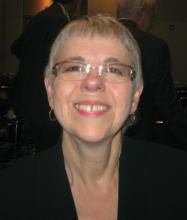DENVER – When it comes to accurately interpreting medical findings in suspected cases of child sexual abuse, experience isn’t the only factor.
Physicians who have completed a fellowship in child abuse pediatrics appear to fare best, as do clinicians who have an expert review their cases at least quarterly, and those who read the Quarterly Update, a newsletter with reviews of published medical journal articles in the field of child abuse.
These findings come from a Web-based survey administered between July and December of 2007, Dr. Joyce A. Adams reported at the annual meeting of the Pediatric Academic Societies. The purpose of the survey was to assess clinicians’ ability to recognize and interpret children’s normal and abnormal anogenital findings from magnified photographs, and to determine which factors in education, clinical experience, and oversight correlate with correct responses to the survey questions.
Study participants were sent an invitation via Listservs of the American Academy of Pediatrics section on child abuse and neglect, the Ray Helfer Society, the American Pediatric Association child abuse special interest group, and forensic nurses who examine children, said Dr. Adams of the University of California, San Diego.
The 45-question survey covered 20 cases and included questions on the identification and interpretation of findings in photos, clinical management of cases, and knowledge of medical literature. It also asked participants about their profession, specialty, experience, practice variables, frequency of expert review of cases, memberships in organizations, and related continuing medical education activities.
Dr. Adams reported on findings from 197 completed surveys. More than half (60%) were from physicians, followed by registered nurses (22%) and advanced practice nurses (17%). The remaining 1% of respondents consisted of one physician assistant and one researcher. In all, 51 of the respondents (26%) indicated that they had completed an earlier version of the survey that had been presented at previous child abuse medical conferences.
Correct answers to the survey were agreed upon by an independent panel of Helfer Society members in 2010. The expert panel could not agree on the answers to four of the survey questions, leaving a total of 41 questions to be included in the study. Each question was worth 1 point, with a perfect score being 41.
The mean total score for first-time survey takers was 32, compared with 35 for those who had completed an earlier version of the survey. Dr. Adams and her associates limited all further analyses to the 146 first-time survey takers. They conducted analysis of means, bivariate analysis, and multivariate analysis to identify variables significantly associated with higher survey scores.
Total number of examinations performed and number of examinations performed monthly were significantly associated with a higher total score on the survey. Other factors – such as having completed a fellowship in child abuse pediatrics, being a member of the Ray Helfer Society, attending workshops on sexual abuse evaluation, being a member of the American Professional Society on the Abuse of Children, and reading the Quarterly Update – contributed positively to total score. Using multivariate analysis, researchers found that the three significant contributors to higher total score were being a child abuse pediatrician, having cases reviewed by an expert at least quarterly, and reading the Quarterly Update.
Dr. Adams also reported that non–child abuse physicians, sexual assault nurse examiners, and advanced practice nurses who examined fewer than five children monthly for sexual abuse correctly answered fewer than 70% of the questions.
Dr. Adams acknowledged certain limitations of the study, including the fact that it was a convenience sample and that competence in performing child sexual abuse medical evaluations "involves much more than being able to identify a finding and interpret it, although in my view, that is an important part," she said. "It’s clear that we need additional studies to determine the appropriate content and the frequency of educational programs for people who do this work, and the best methods to ensure that individuals have their cases reviewed by an expert."
Dr. Adams said that she had no relevant financial disclosures.


